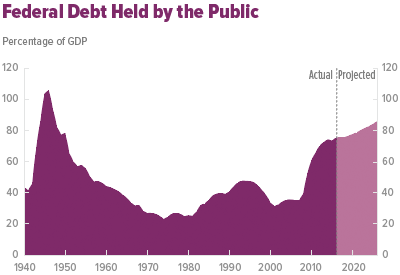Over the next decade, premiums for private health insurance will grow by about 5 percent per year, on average, CBO estimates. In 2025, the average premium for an employment-based insurance plan is projected to be about $10,000 for single coverage and about $24,500 for family coverage.
Premiums for private health insurance are affected by various federal subsidies and regulations, and they, in turn, affect the federal budget. In 2016, the federal government will subsidize most premiums, at a cost of roughly $300 billion.
Read the report








